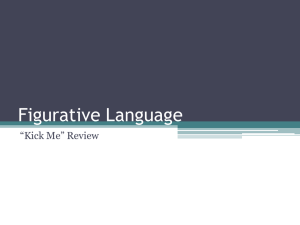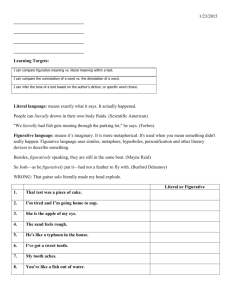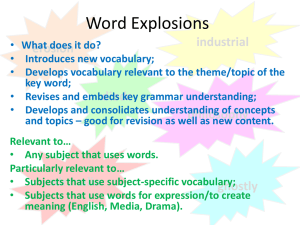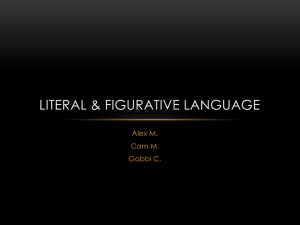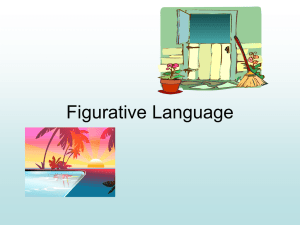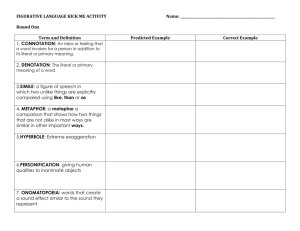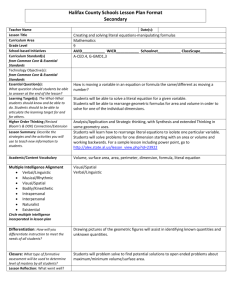File
advertisement
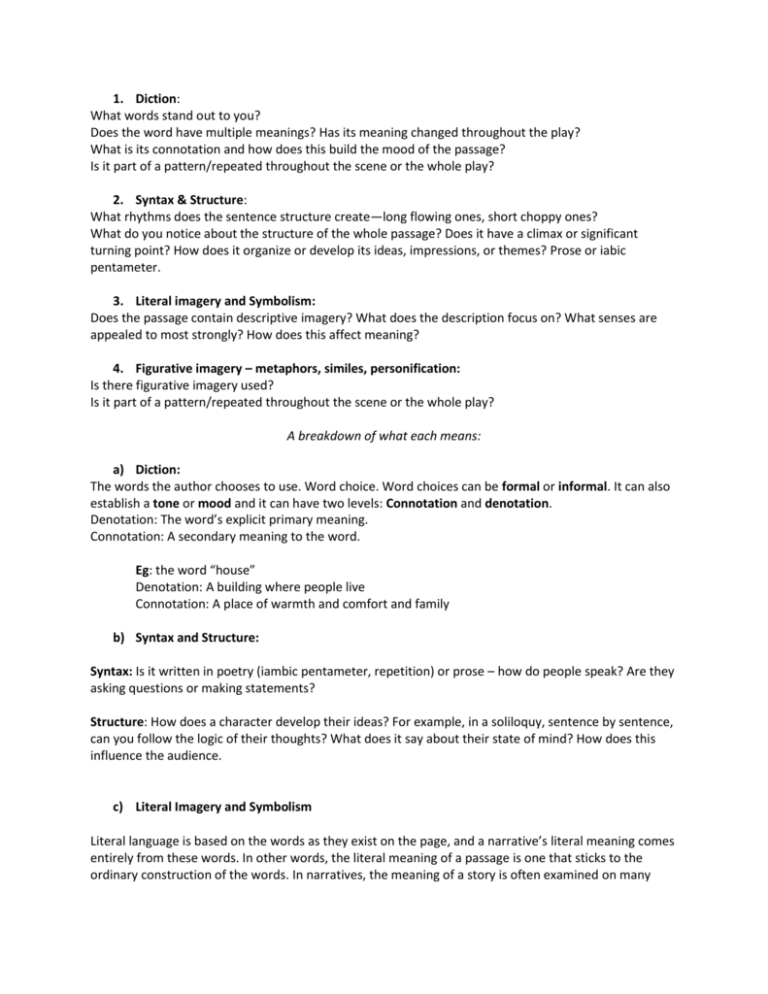
1. Diction: What words stand out to you? Does the word have multiple meanings? Has its meaning changed throughout the play? What is its connotation and how does this build the mood of the passage? Is it part of a pattern/repeated throughout the scene or the whole play? 2. Syntax & Structure: What rhythms does the sentence structure create—long flowing ones, short choppy ones? What do you notice about the structure of the whole passage? Does it have a climax or significant turning point? How does it organize or develop its ideas, impressions, or themes? Prose or iabic pentameter. 3. Literal imagery and Symbolism: Does the passage contain descriptive imagery? What does the description focus on? What senses are appealed to most strongly? How does this affect meaning? 4. Figurative imagery – metaphors, similes, personification: Is there figurative imagery used? Is it part of a pattern/repeated throughout the scene or the whole play? A breakdown of what each means: a) Diction: The words the author chooses to use. Word choice. Word choices can be formal or informal. It can also establish a tone or mood and it can have two levels: Connotation and denotation. Denotation: The word’s explicit primary meaning. Connotation: A secondary meaning to the word. Eg: the word “house” Denotation: A building where people live Connotation: A place of warmth and comfort and family b) Syntax and Structure: Syntax: Is it written in poetry (iambic pentameter, repetition) or prose – how do people speak? Are they asking questions or making statements? Structure: How does a character develop their ideas? For example, in a soliloquy, sentence by sentence, can you follow the logic of their thoughts? What does it say about their state of mind? How does this influence the audience. c) Literal Imagery and Symbolism Literal language is based on the words as they exist on the page, and a narrative’s literal meaning comes entirely from these words. In other words, the literal meaning of a passage is one that sticks to the ordinary construction of the words. In narratives, the meaning of a story is often examined on many different levels, of which the literal meaning is the first-level, the starting off point for interpretation of a narrative. d) Figurative Meaning Figurative language is an extension of literal language. It requires the reader to use her imagination to fully understand the narrative. Figurative language often makes comparisons between two unrelated things or between something familiar and something unfamiliar. These comparisons create depth in a narrative by complementing its literal meaning with an additional level of complexity. Images Because they are representations, images can be literal or figurative N.B. Literal and Figurative Meaning of Images A literal image is one whose interpretation does not involve any changes to the meaning of the words. In other words, a literal meaning of an image comes directly from its words and it is the most direct interpretation of those words. A figurative image, on the other hand, is one whose interpretation creates a sensory representation (this means represents the 5 senses) of the literal object. A figurative image is much more than a direct meaning of the words that describe it because it is created through a manipulation of the literal meaning of the words. Examples The following is a sentence that may be found in a narrative: He ran like a turtle. A possible interpretation of this sentence is that the man actually has short turtle legs, and moves like a turtle. This is the literal meaning of the sentence. Another interpretation of the sentence is that the man runs very slowly, like a turtle, except that he is not actually a turtle. The second interpretation is the figurative meaning of the sentence. It makes a comparison between two objects -- the man and the turtle -- to add an additional level of meaning. It is also called a simile.
